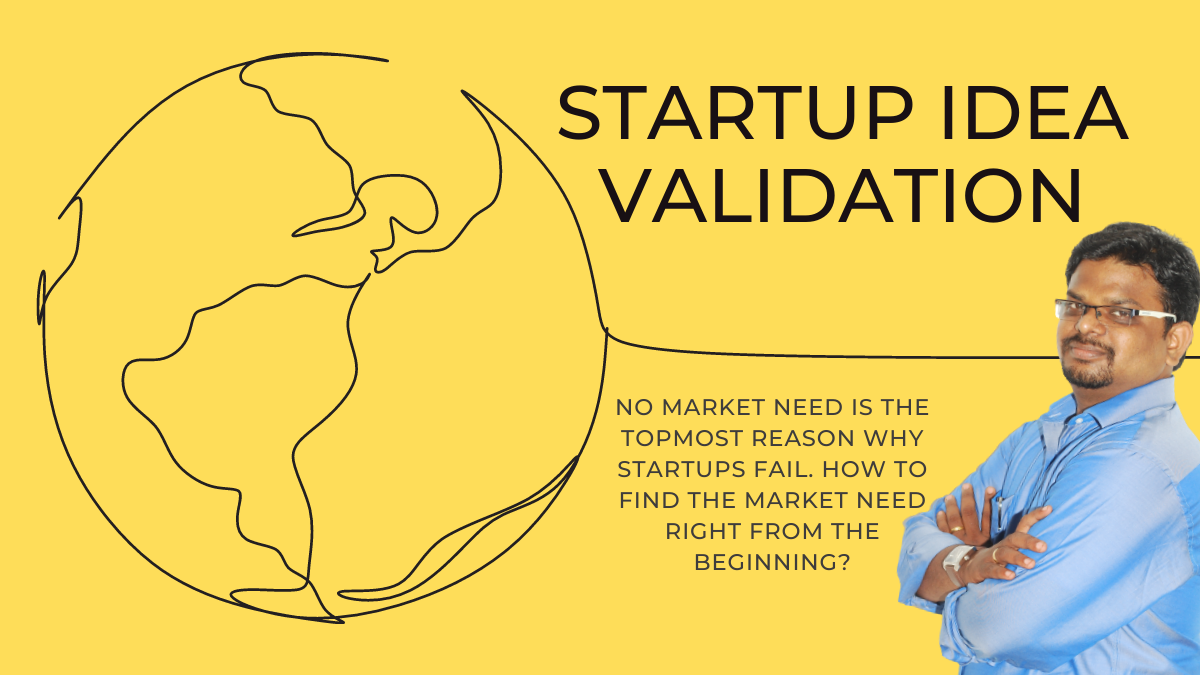“No market need” is the number one reason why startups fail according to Forbes. A whopping 42% of the time, this is the reason cited for startup failure.
While the word startup is quite glamorous with all the funding news, media coverage, and so on, there is a considerable number of startups that fail at various stages. There are a lot of milestones to be achieved before a startup can hog the limelight consistently.
While there are several ways to achieve the “Product – Market Fit”, one of the earliest steps is validation. It is one of the earliest milestones while pursuing a startup idea that you are contemplating.
There are four areas that you must validate.
1) The Problem
Most of the startups take a problem and build a solution solving the problem. However, it is essential to validate whether the problem really exists.
2) The Market
The market which you are addressing should have the problem you are working on solving. The market should be experiencing the problem you are solving and the market should be wanting to come out of the problem.
3) The Product
The product a.k.a solution that you are building to solve the problem should be accepted by the market. This means the product is really solving the problem which you are solving.
4) The Willingness to pay
Finally, the solution should be commercially viable so that the startup can make revenues. Even though the product may solve the problem and the market is in need of such a solution, affordability and willingness to pay matter!
Even if the product is affordable, the target audience may feel that the product is overpriced or not reasonably priced! Hence it is essential to price the product in the right way!
Having said this, one of the traps where aspiring founders fall is putting a lot of effort to get affirmative responses from that target audience to ensure that their assumptions are rights.
This is extremely dangerous as you will be focused on trying to prove that your assumptions are true. On the other hand, while validating, you should go with an open mind and try to understand the real problems the market is facing and build a solution around them.
The steps involved in Idea validation.
1) The Objective
Decide what you need to validate. The validation can be done for the problem that you are working to solve, the market where you believe the problem exists, the solution itself which you believe will solve the problem, and finally the willingness to pay for the solution by the market.
You need to decide which you will be validating. You can do the validation for the all above, one after the other.
2) The Assumptions
List out the assumptions that you have regarding the area you want to validate. In the validation process, these assumptions have to be tested and found whether they are true or not.
Hence it is very critical to list the assumptions that you feel may be false. Ruling out the false assumptions will make the validation process easier!
3) The Testing
Once the assumptions are ready, those have to be taken to the target audience and seek their responses to the assumptions.
The testing can be done through, face to face interviews, survey questionnaires, email questionnaires, etc.
You can also decide on what percentage of affirmations on the assumptions will make the assumptions true.
4) The Results
Once the test results have come, you will have a fair idea of whether the assumptions are true or not. You can eliminate the assumptions that are not true and work further with the assumptions that are proved to be true. While the positive results may be a big boost to continue the startup idea, it doesn’t guarantee success. Success depends on various factors including how well the idea is executed!
An insightful understanding of the problem, the market, the solution, and the willingness of the target audience to pay will aid in taking the right steps towards achieving the right product-market fit.
These can be achieved through step by step process of defining the objective, listing the assumptions, experimenting, and making the conclusion.



